The summer before I turned 40 – with my fertility ebbing, as everyone with a vested interest in such things felt the need to remind me – I decided to set sail on the biggest adventure of my life.
Together with four men aboard a small sailboat named Barba, we cast off from southern Norway, bound for the remote Arctic archipelago of Svalbard on a four-month expedition that covered more than 4,500 miles.
A freelance travel writer and experienced scuba diver who grapples with seasickness, I’ve traveled the world mostly on land. I’d been sailing offshore in something other than a cruise ship only once, during a training trip to the Faroe Islands from Norway aboard Barba. And I’d perhaps oversold my cooking skills as a way to get back onboard for this more serious adventure (officially, I was the expedition’s chef).
The truth is, I was looking for adventure. And I was hardly the only one.

Our crew of five hailed from Norway, Russia, the United States and Germany (I was the only woman and the lone American onboard).
The captain was Andreas B. Heide – an experienced sailor and marine biologist I’d met years before through the Couchsurfing website. He free dives with orcas in the Norwegian winter, scorning tropical destinations to sail to places such as Iceland and Greenland instead.
Daniel Hug, an outdoor adventurer and mountaineer from Germany who’d worked as an avalanche observer as well as a part-time hair model, was our onboard cameraman.
We met Ivan Kutasov, the Russian, thanks to a serendipitous Instagram post of him surrounded by ice in a plywood sailboat in the Russian Arctic. And Jon Grantangen was a mild-mannered Norwegian and ex-military marksman who’d already been to the Arctic aboard Barba (and had once walked the entire length of Norway, just for the heck of it).
We were a cast of characters that seemed perhaps more fit for a reality TV show than an Arctic expedition to a place with more polar bears than people. And I wondered how being the only woman aboard would play out.
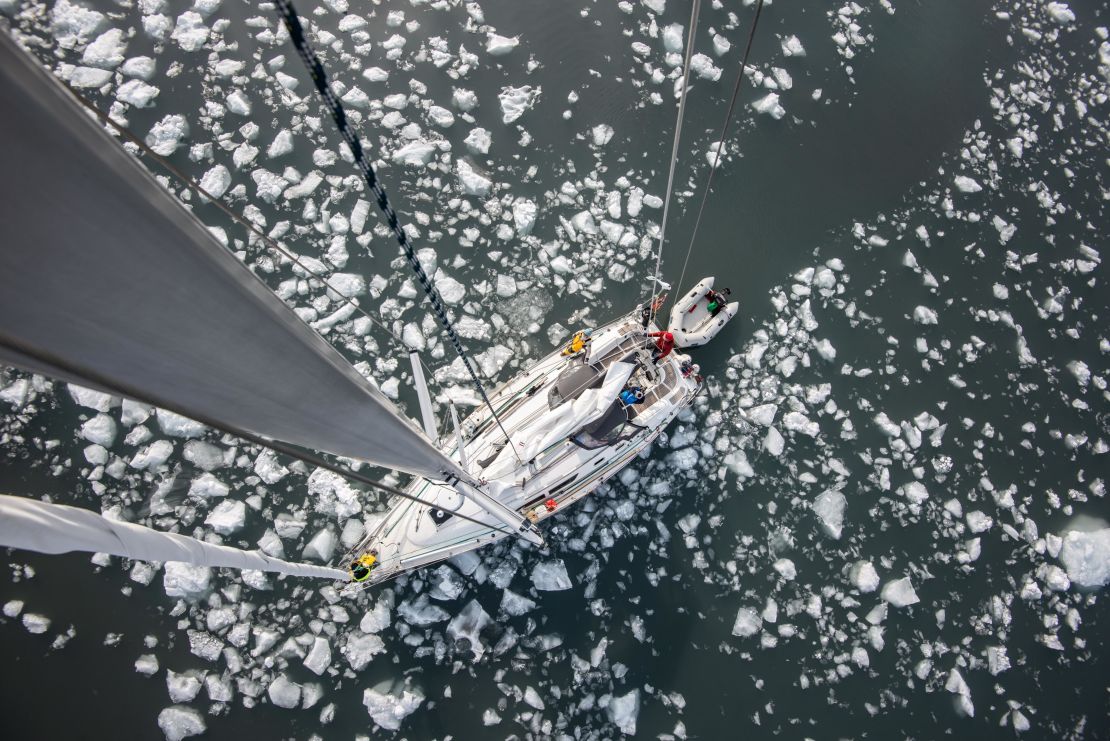
An expedition laced with angst and adventure
Our floating home, Barba, was Heide’s 37-foot Jeanneau sailboat made of fiberglass, technically better suited for snorkeling outings in the Mediterranean than picking her way through the pack ice in the polar regions, as we eventually would.
As the saying goes, though, the best boat is the one you have. And Heide had tricked out Barba to the max with all manner of safety gear – including radar, a forward-looking sonar to scan for ice and a dinghy for getting ashore and exploring tighter spots – so she was as seaworthy as possible for our journey to Svalbard and back.
Inside, the boat was the size of a small college dorm room, with three cabins for sleeping, a galley and a lounge, where we all sprawled amoeba-like, occupying every square inch to read, eat and scour the nautical charts.
In an effort to improve Russian-American relations, it was decided that Kutasov and I would room together. And it worked out well, as he and I amassed a collection of driftwood, reindeer antlers, sea glass and other Arctic detritus that wouldn’t have flown inside the tidier German and Norwegian cabins.
Some but not all of us had partners waiting for us back home, and the satellite phone came in handy for staying connected when we were offshore. My boyfriend at the time, from France, had sent me off with his full support, never wanting me to miss an adventure. (In the back of my mind, however, I knew we both needed a break).
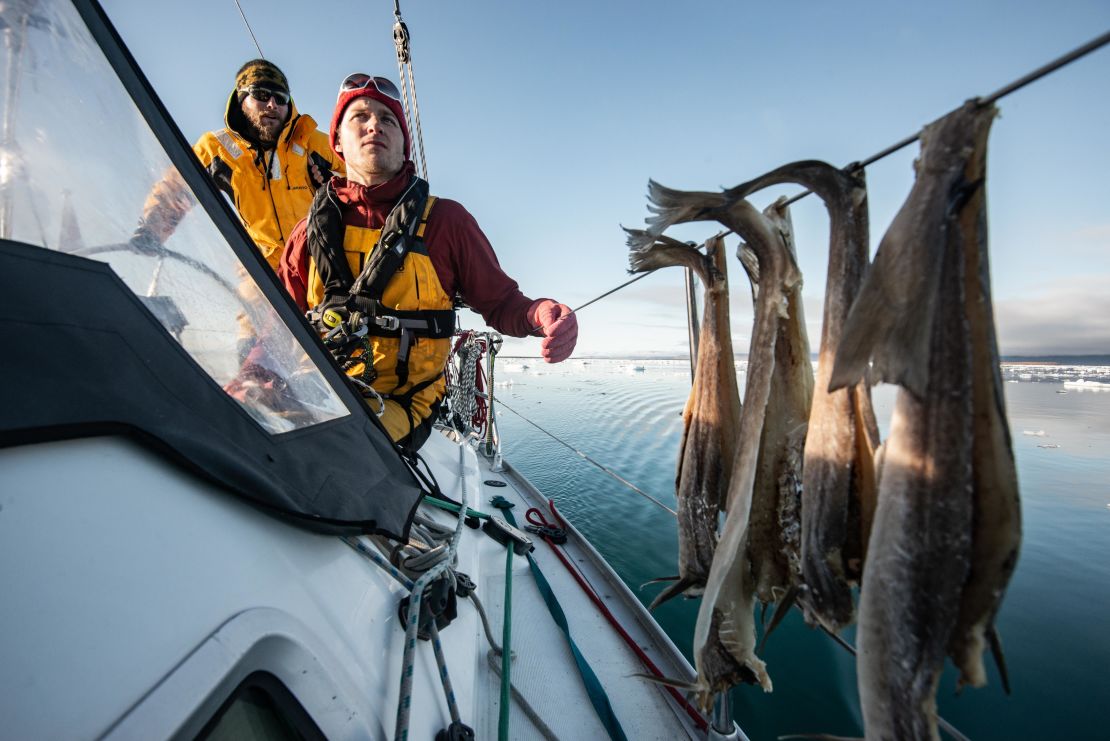
That’s not to say there weren’t romantic adventures off the boat in Norwegian ports en route, although never between the crew (and what happens on and off a sailboat stays there, as any sailor knows).
We carried plenty of gear with us for adventures of the outdoor variety, too, including a compressor for filling scuba tanks for diving under the ice and paragliders for two of the crew, who once soared above a polar bear hunting for bird eggs on a cliff.
Visitors to Svalbard are required to travel with heavy duty rifles outside of the main settlement in Longyearbyen because of the presence of polar bears. And while we never had to fire a flare gun or a real gun to scare off a bear, they were the most vital tool in our kit for going on land (only two of our crew, the Norwegians, were licensed to shoot).
For me, the reason for embarking on a trip like this was pretty simple – I felt like I had nothing to lose and everything to gain at a time in my life when I needed something to push me out of my comfort zone as a travel writer accustomed to luxury trips with little effort required.
I wanted to get back to my true traveler roots, and setting sail with a bunch of men – most from countries where women and men are pretty egalitarian – seemed like a good way to do it.
I had personal angst driving me, too. It took me almost 40 years to get there, but I finally reached the point where I knew I wanted kids. I just wasn’t sure if I was in the right relationship to have them.
Setting off with four adventurous guys into the Arctic ice seemed like a good way to put off making any decisions a little longer while enjoying life to the max and seeing what might drop into my lap.

Where bears outnumber people
Svalbard is a glacier-covered archipelago roughly 600 nautical miles off the northern coast of Norway that’s considered Europe’s last true wilderness. It’s home to roughly 2,600 people, including a slew of scientists and over 3,000 polar bears.
Once we left the comforts of the cozy villages along the Norwegian mainland, the three-day crossing to Svalbard’s southern tip gave us time to think about the wilderness that was waiting.
Each of us took turns “on watch,” steering the boat and manning the sails to navigate during two-hour-long stints that continued around the clock. As we approached Svalbard, it became clear that navigating was nothing like it had been along the mainland.
The waters weren’t as well charted on maps, for starters, and the added risk of hitting floating ice was a constant worry in a fiberglass boat that could go down in minutes following an encounter with ice at cruising speed.
The men hardly babied me as the only woman onboard, even as I hung my seasick head off the rails “calling the moose” (that’s Norwegian for losing your lunch).
There were times when the captain just left me to it with the flailing sails on deck and a panicked look on my face while he went back to sleep with the others below – but being thrown into the deep end is the best way to learn, I realized.
Heide and I were both on deck one foggy evening when we got a big surprise – a whale that appeared out of nowhere within a yard or so of the boat’s port side. It came and went like an apparition, since we were clipping along in choppy seas.
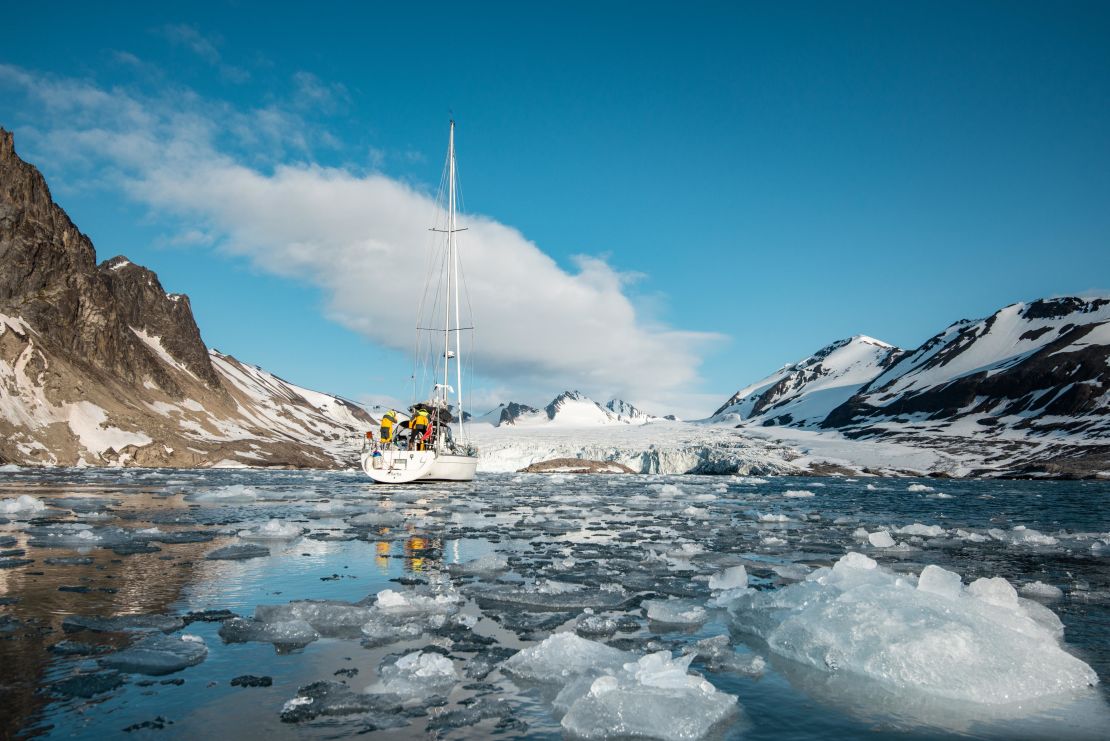
Dodging icebergs in the darkness, at least, wasn’t something we had to worry about – sailing in the Arctic during the summer means round-the-clock daylight. And between all the excitement, nauseating swells and the fact that it never got dark, sleep was hard to come by.
Once we left the comfort of the last ports in Svalbard – Longyearbyen followed by Ny-?lesund, a research town where we partied like rock stars with scientists on a Finnish yacht, glacier ice cubes floating in our whiskey – we were truly on our own, the boat our floating support system.
For 40 days, there was no internet, not to mention anywhere to provision for food and fuel (we had jerry cans of diesel strapped to the deck and refilled our water tanks with melt water from icebergs). I had the boat’s larder stocked with dried beans, potatoes, cabbage and other foods in it for the long haul, and once we ran out of fresh produce and meat, we kept happy with Arctic char we fished from the streams.
With no internet access to distract us, we’d long debate topics you could usually solve with a simple Google search. Early on, we wondered if polar bears could climb aboard Barba from the water (“do polar bears board boats?” would have provided some quick answers). But without instant Google satisfaction, we discussed for an hour how our first polar bear encounter might go.
The guys dubbed a jam-packed, below-deck storage locker accessed via a tiny door on the boat’s stern the “bear bunker.” They teased me (after all, I was the only crew member who’d never shot a gun) that I could sequester myself there if one ever clambered aboard.
Losing track of time under the midnight sun
When our first up-close bear encounter came, however, Google was far from our minds.
Early one morning on the island of Nordaustlandet on the west coast of Svalbard, with most of the crew still sleeping below deck, Heide sounded the alarm.
“Polar bear! Swimming toward the boat!,” he shouted. What I thought was a joke meant to send me scurrying for the bear bunker turned out to be the real deal. We popped up on deck to see a polar bear paddling toward Barba, just a few yards off stern.
We had our flare guns and rifles ready, as one must with animals known to actively stalk humans But in the end, a wooden pole we used for pushing ice out of the way while motoring sufficed for keeping the bear at bay while we watched in awe.
A persistent juvenile – and most likely hungry as there was no sea ice in the area for hunting seals (the captain had been diving in the same water the day before) – the animal made several attempts to board us before giving up. We had a theory that the cod drying on Barba’s rails attracted the bear, but had it surprised us onboard, we would have easily found ourselves on the menu.
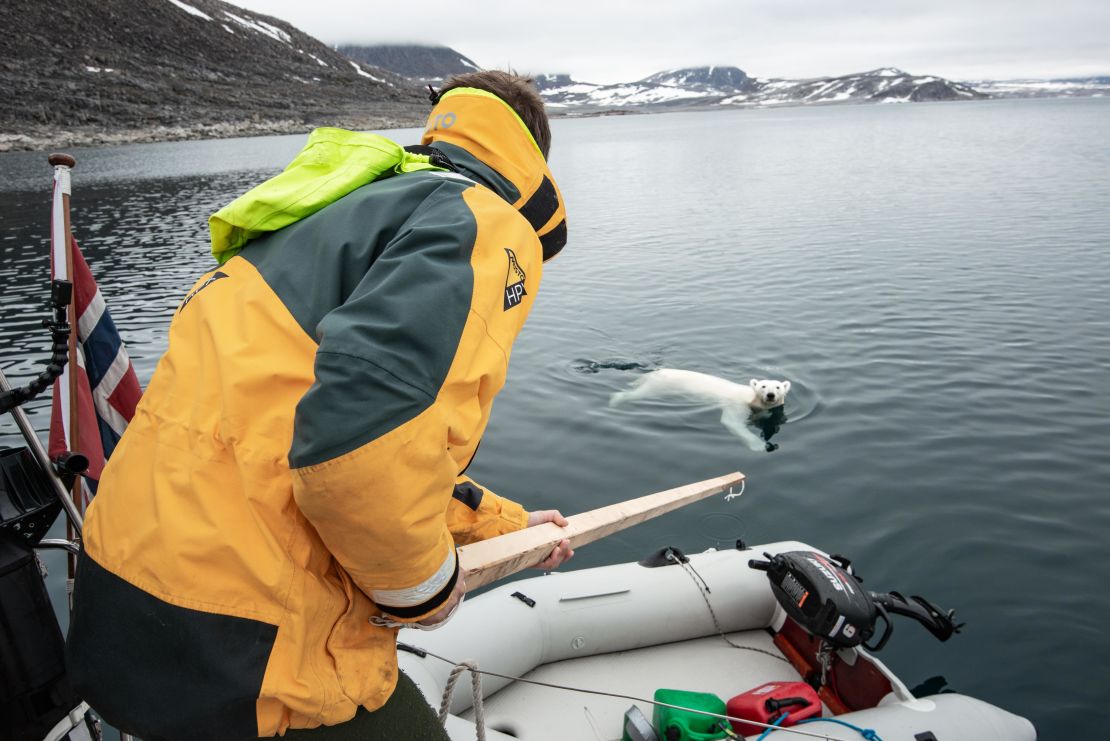
During the weeks that followed, as we circled the entire archipelago, we had six other polar bear encounters. One lumbered across the beach like a brontosaurus, surprising me out the galley window while I was prepping tuna sandwiches for lunch.
Another kept two of the crew hostage inside a hunter’s cabin on the beach, where they’d been trying to heat up a sauna so we could wash up. The bear paced back and forth outside while those of us on the boat kept in VHF contact with the crew to let them know when it finally moseyed on.
Along with sea birds everywhere (feisty Arctic terns defending their nests, and huge glaucous gulls that made the Florida variety look like finches), there were Arctic foxes, curious reindeer and, once, an elusive pod of belugas that moved too quickly for us to snorkel alongside (yes, we tried).
As we made our way around the archipelago those weeks, we lost all track of time under the midnight sun that bobbed drunkenly above but never dipped close to the horizon.
It was exhilarating and exhausting. We’d wake at noon, eat breakfast at 3 p.m., and finally nod off to sleep 12 hours later. If we bothered to look at the clock, that is.
Time has no significance with the combination of no darkness, no stores or restaurants, no internet to distract you, no busy work to busy you – and nobody else around for hundreds of miles. Our only job was staying alive and enjoying all that wilderness.
When we finally made it as far as the ice would let us go, to 81 degrees north in the start of the dense pack ice surrounding the North Pole, Heide and I strapped on our scuba tanks and dived beneath a small berg, trusting our crew with their rifles ready above water to throw a flare and alert us if a bear approached.
Afterward, we all toasted our big adventure atop the same iceberg with a bottle of Schnapps – then we jumped back onboard in a hurry, as the pack ice was closing in around us. A harrowing hour followed as we made our way south, back toward the open water, as the ice and the changing wind direction threatened to squeeze us in.
We used wooden poles to push it away until we were finally out, every crunch and creak on the hull a reminder of our fragile home.
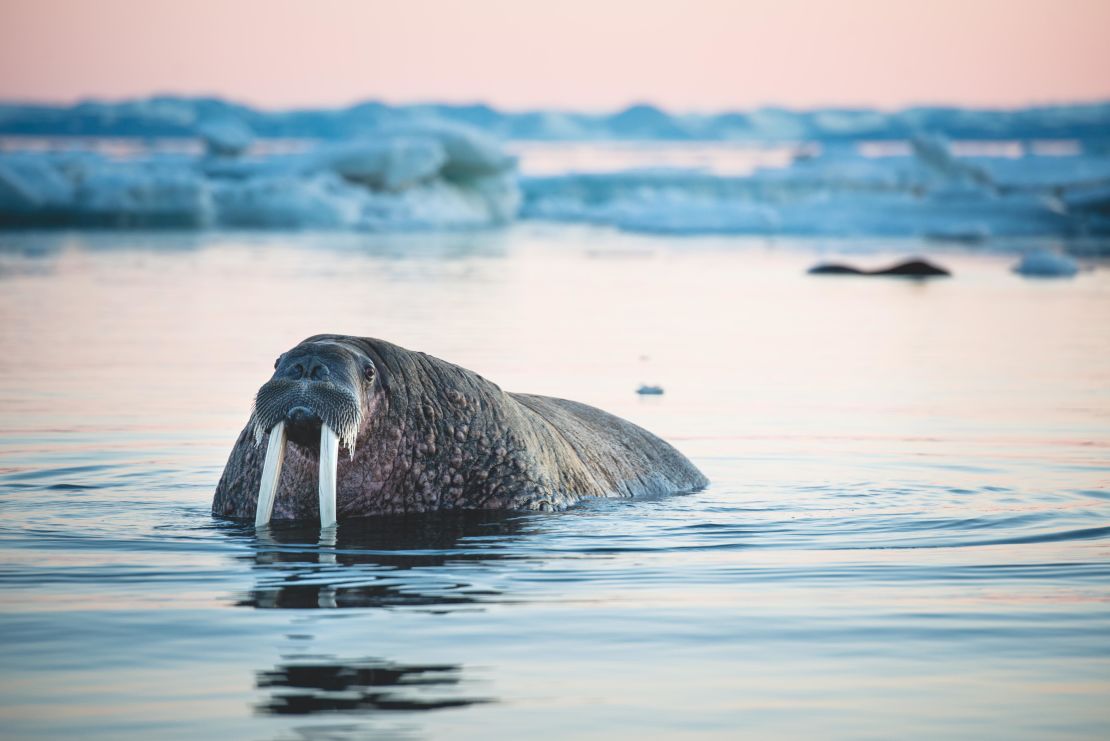
Walruses on the rise
One of our last stops in Svalbard was Kapp Lee in the east, where hundreds of walruses hunt for shellfish (their mouths a powerful vacuum that sucks clams from the ocean floor) and haul themselves onto the dark sandy beach to socialize and sleep.
Nearly hunted to extinction in Svalbard over the course of centuries, the animals are making a comeback. And it was a privilege to find ourselves and our tiny boat among them and the ice hugging the shore.
There, Grantangen, who always helped me with the laundry and talked books with me, too, taught me some military skills as we army crawled on the sand, silent as church mice, shimmying quietly on our bellies to within inches of one snoring walrus.
The animals are as agile as ballerinas in the water, but more awkward on land, where their eyesight is poorer, too. The sleeping walrus was one in a herd of hundreds of juvenile and sub-dominant males (called a bachelor group), but we reckoned we could outrun the animals on land, even if they’d surely maul us in the water. Still, my heart thudded in the sand as I watched drops of slobber glisten on its ivory tusks.
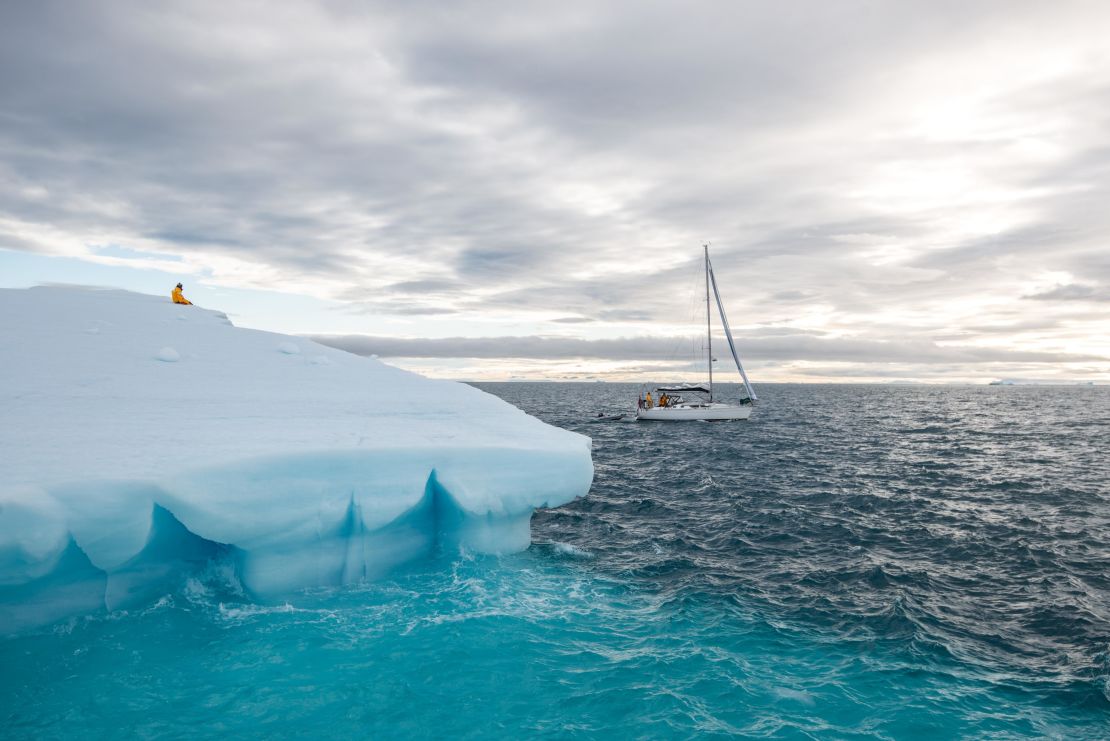
Home is where the anchor drops
It was late August. And this far north, autumn roars in like a lion. It was time to sail south to the home port – back to the comforts of mainland Norway, back to our lives.
I turned 40 the day before I stepped off Barba for good. My French boyfriend dressed like a captain to greet me in a chivalrous gesture I won’t forget, there to accompany me home to the south of France. But I was changed.
I soon realized we were trying to make something happen that wasn’t in the cards from the beginning.
Those months in the Arctic taught me more than I knew about risk-taking and survival – how to read the signs better in everyday life and go with your gut.
In a belated celebration of our 40th birthdays with my best friends in Jamaica later that year, I met a bachelor Cuban on a beach with no walrus in sight. It was like hitting a speed bump – or perhaps more like throwing out a drag anchor from a sailboat to stop you from barreling along in high winds in the wrong direction. In a hurry, the Frenchman and I split.
Now, when the days blend into each other on land – and with two half-Cuban toddlers underfoot, with no far-flung travels on the horizon for the foreseeable future – I journey back in my mind to the place where I dived under an iceberg at 81 degrees north and snorkeled under a bird cliff prowled by polar bears. To where I once crawled close enough to a walrus to watch its whiskers twitch.
Crew is currently being sought for Barba’s 2021 expedition to Svalbard. Visit Barba.no for info. Terry Ward is a Florida-based freelance travel writer who’s constantly dreaming of Norway. Daniel Hug is a professional photographer and filmmaker, adventurer and mountaineer from Germany living in the Dolomites.
















